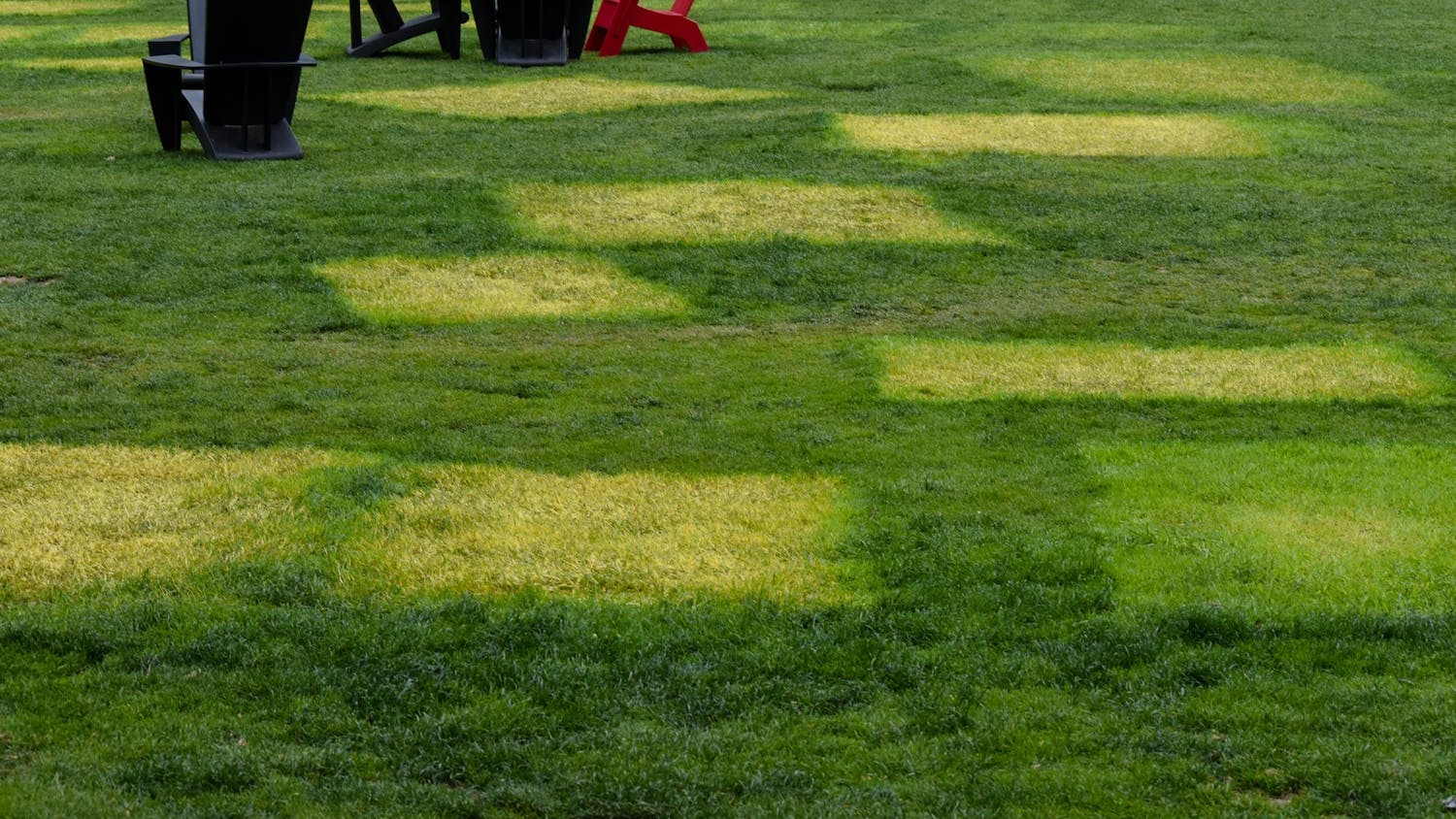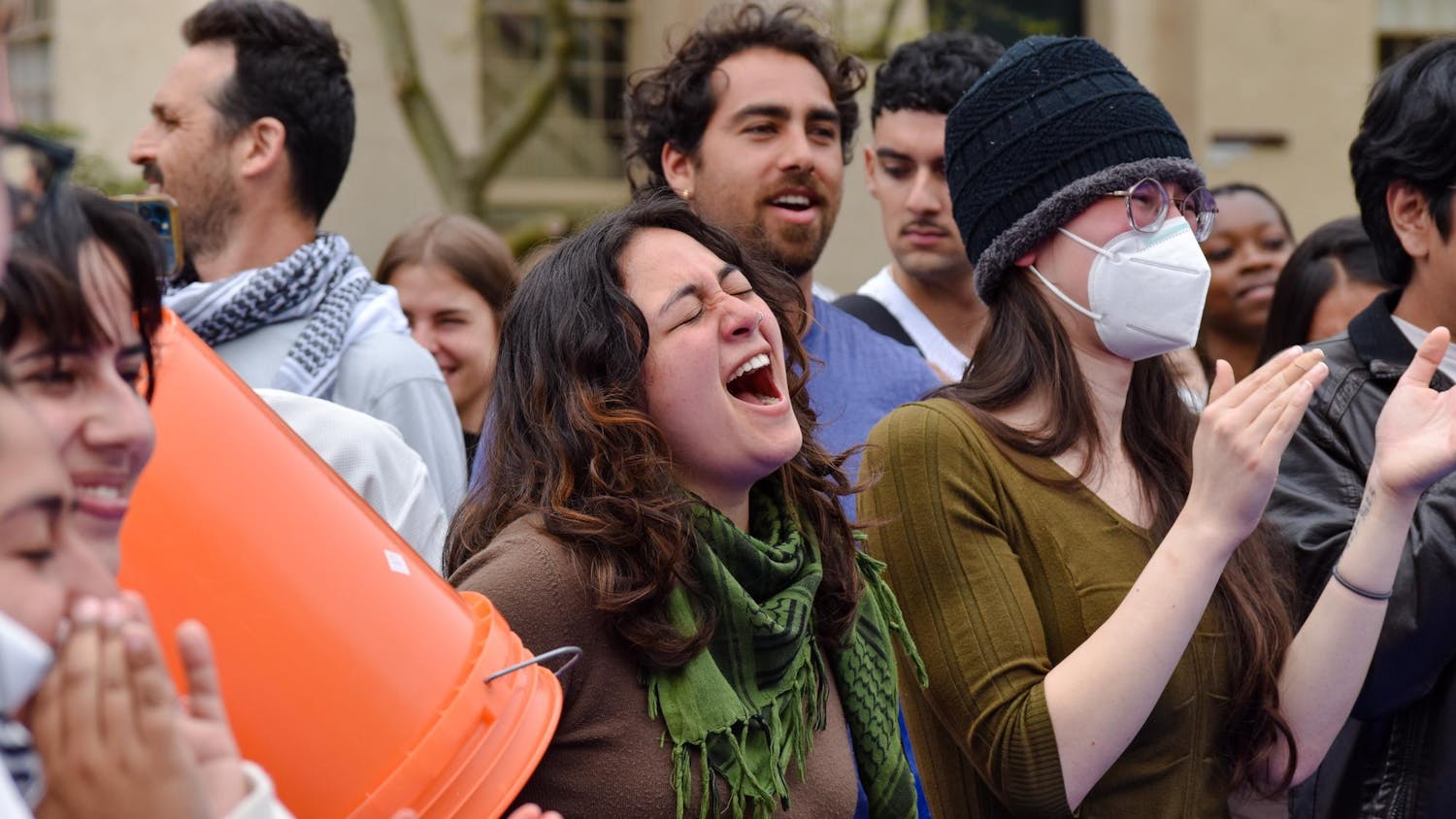After last year’s polar vortex left Providence and much of the country feeling the effects of extreme winter weather, the Department of Facilities Management is hoping for milder weather this year. And it seems, at least in terms of temperature, the department may be in luck.
Unlike last year, when many areas experienced record-breaking cold, Rhode Island is forecasted to have a relatively warm winter with above-average temperatures, according to the National Oceanic and Atmospheric Administration website. However, like last year, predictions foresee a wet winter with above-average rates of precipitation.
Dealing with even a normal New England winter is a big job. Facilities is responsible for clearing 11.5 miles of sidewalks and walkways, 105 parking lots, 40 loading docks and the synthetic turf fields, said Pat Vetere, grounds superintendent. In a typical year, this job takes about 75 tons of salt, and during last year’s polar vortex, they used 180 tons, he added.
The snow removal plan has expanded this year to include the recently acquired property at the corner of Brook and Cushing Streets and the walkway between Waterman and Angell streets, said Stephen Maiorisi, vice president for facilities management.
“Since the last two years were pretty bad, we’re hoping that this year will be more of an average winter,” he said.
Still, nothing can be guaranteed. “There’s so many variables” that affect how difficult it is to deal with snow, he added. “The amount of snow in terms of inches that we get doesn’t necessarily translate to cost or whether it’s a bad winter or not for us. It’s more about the number of events that happen.”
Another factor determining the difficulty of cleanup is a storm’s timing, Vetere said. Snow that falls all day or in the morning when people are driving to work is harder to deal with than snowfall during the evening or on a weekend, he added.
This year’s snow removal budget is $350,000, though in the past two years the University went over budget, spending $440,000 and $600,000 in the 2013-14 and 2012-13 academic years, respectively, Maiorisi said.
The past two years were “abnormal,” said Maiorisi. Snow removal spending was $112,000 in the 2011-2012 season, $246,000 in the 2010- 2011 season and $203,000 in the 2009- 2010 season, according to previous Herald coverage.
About two-thirds of the budget is dedicated to labor, including the small percentage spent on outside contractors, said Maiorisi, adding that supplies, primarily salt, make up the remaining third.
“Regardless of an inch or a foot, we have to provide safe passage” for everyone on campus, said Donna Butler, director of custodial services. This includes clearing snow during winter vacation, since some students and staff members may still be on campus.
Since the University does not hire new workers during the winter — apart from independent contractors who do a small amount of work — facilities workers may put in “a lot of overtime,” Maiorisi said.
When the weather gets bad, “we eat with the students throughout the storm, we’ve slept in the dormitories, we’ve slept in auxiliary housing,” said Vetere.
Workers can go to the Sharpe Refectory to eat or warm up, Butler said, adding that they are also provided with gloves, hats, boots, rain gear and other protective clothing. During winter break when the Ratty is closed, “I’m right up there with Domino’s as far as pizza delivery,” she said. “We want people to take breaks and work safely.”
Organization is key when preparing for a storm. Facilities begins planning as many as 72 hours in advance if it knows a storm is coming, Maiorisi said.
Workers are told when they will most likely have to come in, which may even be before the snow starts falling, Vetere said.
And with years of experience — Vetere has been at Brown for 21 winters, Maiorisi for 18 and Butler for 14 — the team of snow veterans knows how to act once called upon.
Students reported varying degrees of satisfaction with snow removal at Brown. “I think they definitely do” a good job, said Shannon Sotomayor ’17. “I remember coming home late, and there would already be people plowing the paths for us for the next morning, and I thought that that was really great.”
But several students said that ice is a major concern. “I think as you go south the ice sometimes gets a little bit worse,” said Kat Boorstein ’16. “I have fallen a bunch of times outside of the MCM building because they don’t really salt that as well, but I think in center campus it’s good.”
“I don’t think they do a good job at cleaning up and picking up and making sure that the streets or the pathways are safe for students to walk on,” said Emmy Cantos ’17, who had a friend break his leg falling on ice last year. “I don’t think I feel comfortable” walking on campus during the winter, she added.
Maiorisi recognizes this problem: Even after salting, ice can be difficult to manage due to the freezing of melted snow, he said. Ultimately, he added, “it’s all about being prepared.”
ADVERTISEMENT




